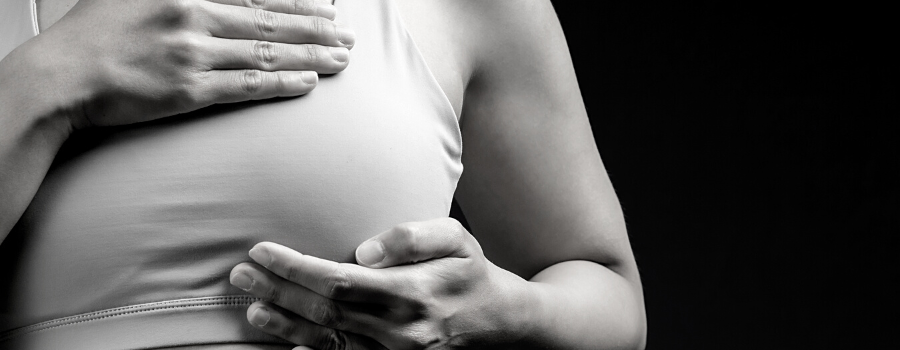
Great question! Whether women should perform a breast self-exam can have a confusing answer, so we are glad to help clarify!
Don't: Rely on Self-Breast Exams
Most organizations and clinicians no longer recommend routine breast self-examinations because they have not been shown to increase the detection or survival of breast cancer.
Routine self-breast exams are no longer recommended by the American Cancer Society (and most clinicians) because they haven't been shown to improve early detection or survival rates. In fact, finding a lump can cause unnecessary anxiety, especially since most breast changes are not cancerous. This may lead to follow-up imaging or even biopsies, which can feel invasive when the lump turns out to be benign.
If the lump turns out to be noncancerous (benign), you might feel that you’ve undergone an unnecessary and stressful medical process.
Do: Get to Know Your Breasts
While routine self-exams are no longer widely recommended, “breast awareness”—in conjunction with regular clinical screening—is an important tool in detecting breast cancer early. At FPA Women’s Health, we encourage all women to become familiar with their own breasts so they can notify us if they feel a change or something concerning.
Step 1: Examine Your Breasts at the Same Time Each Month
Hormonal fluctuations throughout the month can change how your breasts feel. The best time to check is right after your period, when breasts are typically less tender or swollen.
Step 2: Get to Know Your Anatomy
Start by visually inspecting your breasts from different angles, including while leaning forward. Then, use the pads of your fingers to feel each breast using light, medium, and firm pressure.
Keep in mind: everyone’s breasts have natural lumps and bumps due to mammary glandular tissue. Learn what your own normal feels like. For example, if there’s some lumpiness on one side, it’s usually mirrored on the other.
Be thorough—feel around the nipples and all the way to your armpits. Most importantly, take your time and don’t rush.
Step 3: Look for Changes in Breasts
Be alert for any changes that feel or look different from your usual anatomy. In the next section, we explain what concerning lumps or symptoms might look or feel like.
What Does a Breast Cancer Lump Feel Like?
A cancerous breast lump often feels hard, firm, and fixed in place. Unlike normal breast tissue or benign cysts, these lumps may have jagged or irregular edges and feel very different from the surrounding area.
Characteristics of a Concerning Lump:
- Feel: Hard, firm, or solid—rather than soft or smooth.
- Edges: Irregular or jagged—not rounded or uniform.
- Mobility: Doesn’t move easily when pressed; may feel anchored in place.
- Consistency: Noticeably different from the surrounding breast tissue.
Other Warning Signs to Watch For:
- Breast changes: A new lump or thickening in the breast or underarm area, or a sudden change in breast size or shape.
- Skin changes: Redness, puckering, dimpling, scaling, or any change in skin appearance.
- Nipple changes: Discoloration, inversion (turning inward), scaliness, or unusual discharge (especially if bloody).
- Persistent pain: Ongoing breast or nipple pain that doesn’t go away.
What to Do if You Find a Concerning Lump
If you notice a new lump or change in your breast, it’s important to schedule an appointment with a healthcare provider as soon as possible. Early detection significantly improves the chances of successful treatment, so don’t delay. Only a medical professional can determine the nature of a lump through diagnostic tools like mammograms, ultrasounds, or MRIs.
Remember, not all lumps are cancerous—many are benign and pose no risk. Also, pain is not a reliable indicator; some cancerous lumps are painless, while many painful lumps turn out to be non-cancerous. When in doubt, always consult a medical expert for peace of mind and appropriate care.
At FPA Women’s Health, we are here to help you keep your breasts healthy. Starting at age 40, we recommend an annual breast exam by a clinician and a mammogram.
Make an appointment today to discuss any concerns you may have—we’re here to support you with compassionate, professional care.
This post is part of Ask Dr. Rachel, an ongoing Q&A series where Dr. Rachel answers your questions about women’s health—anonymously and with care. Got a question? Email us at AskDrRachel@fpawomenshealth.com and it may be featured in a future post.
Share This
Get Help Now